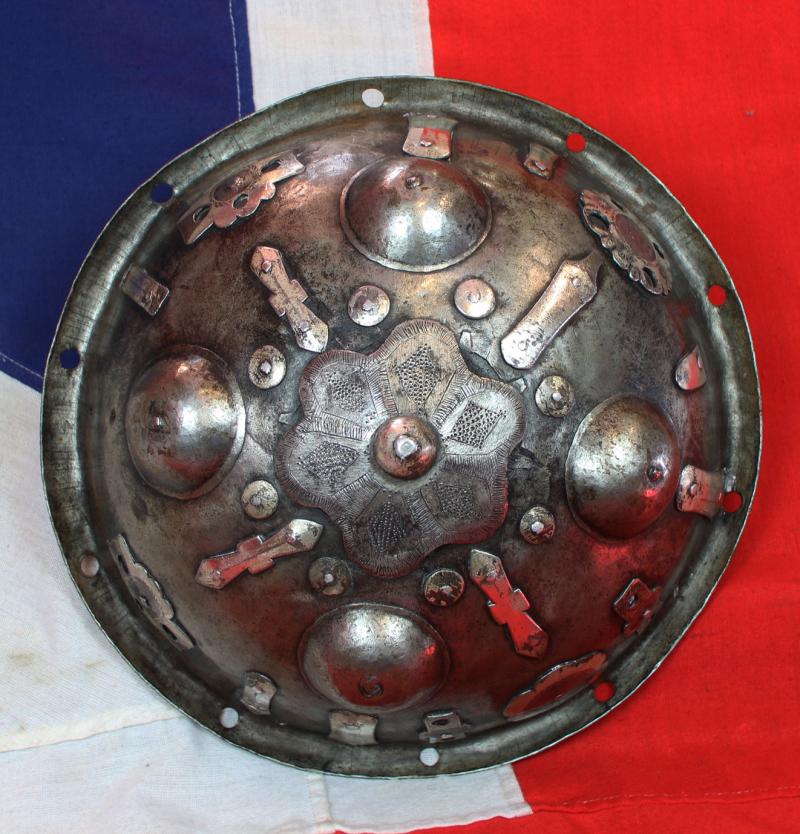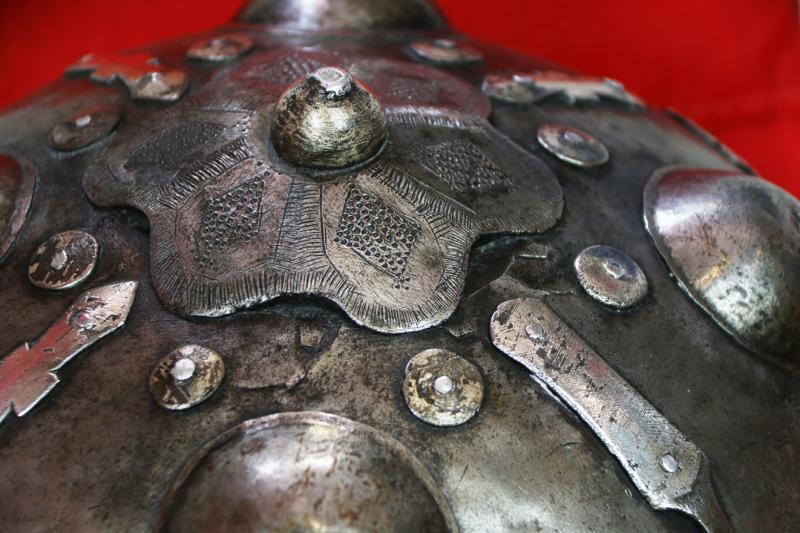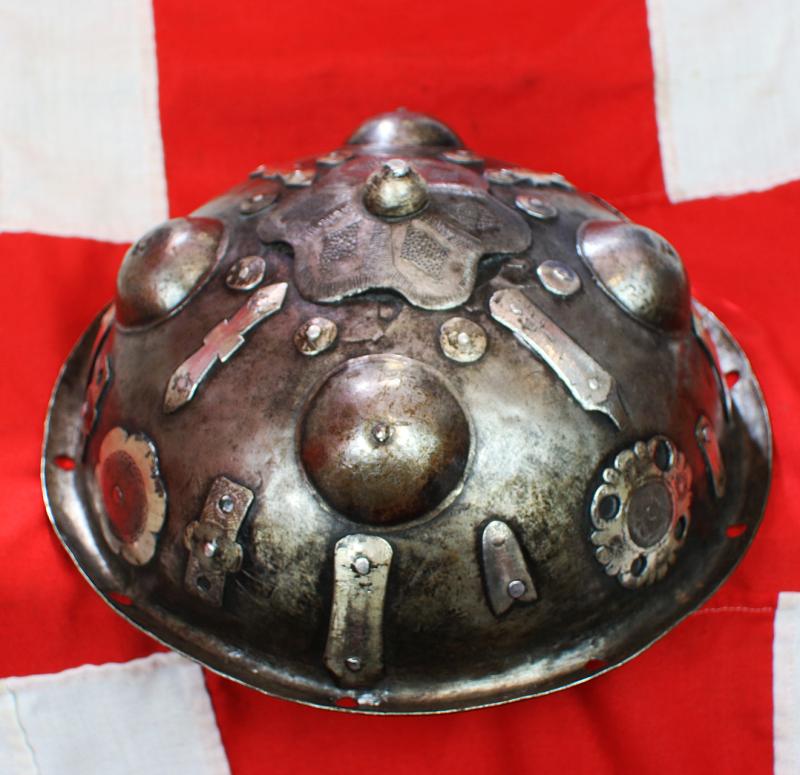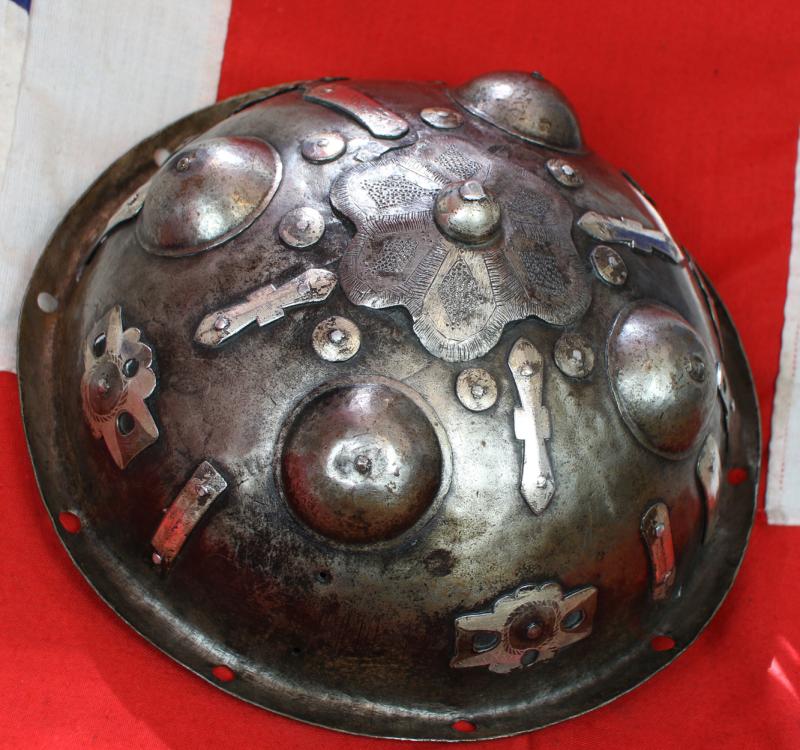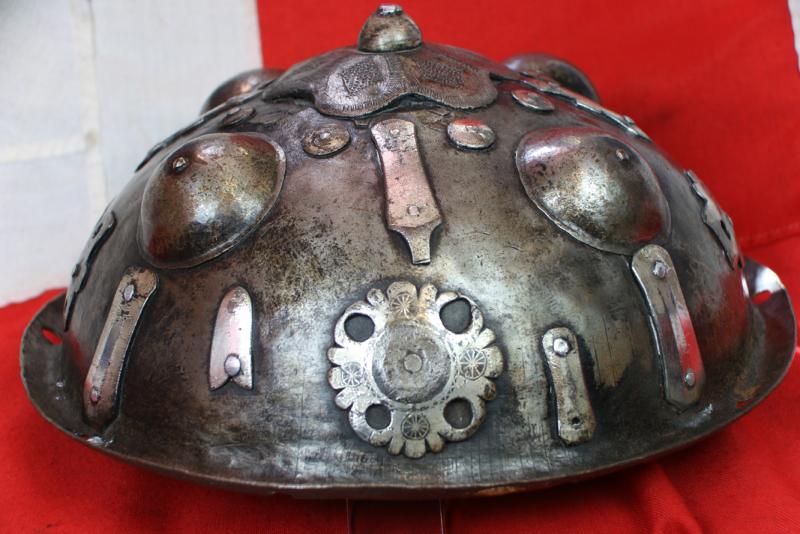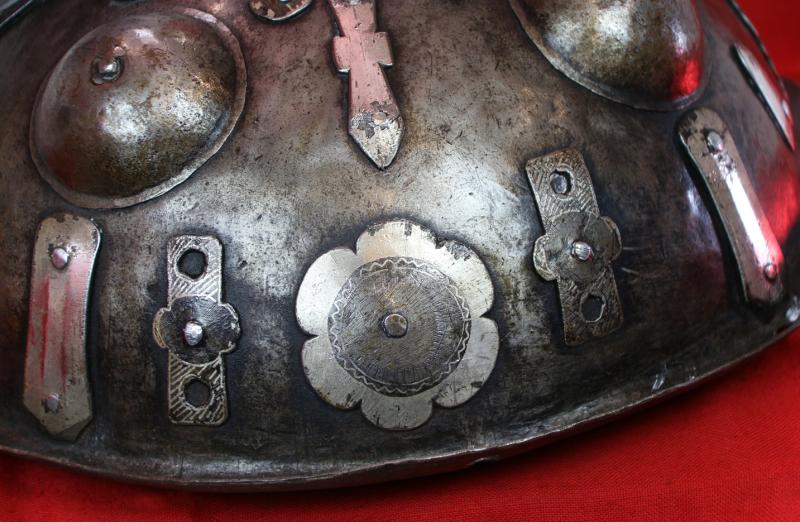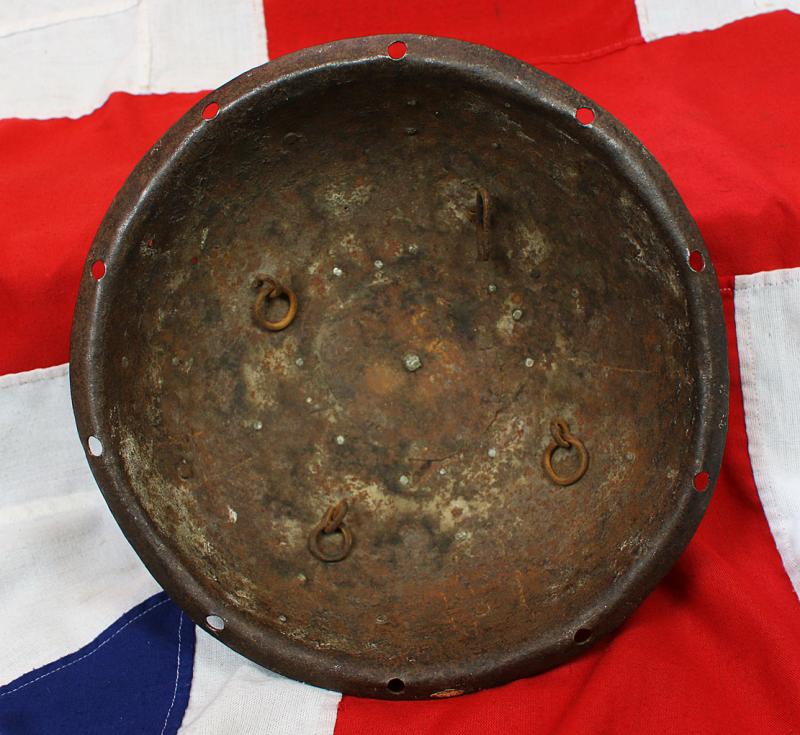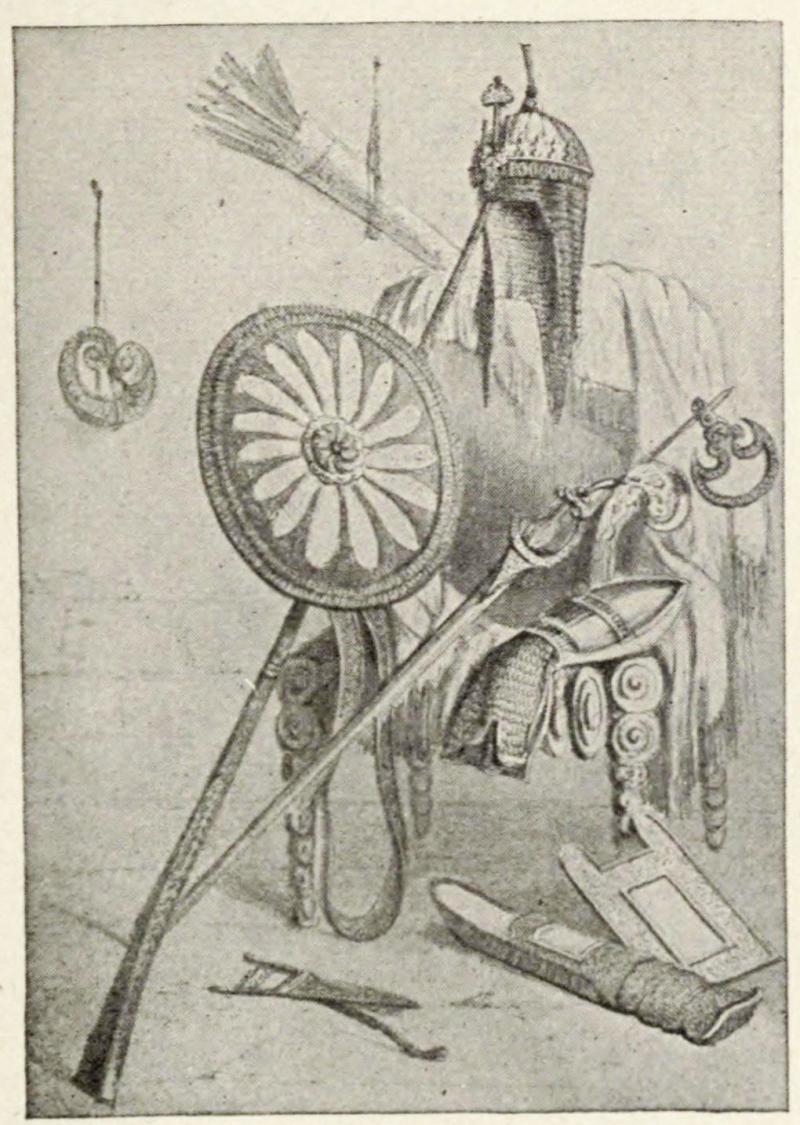A Deeply Convex Domed Moghul & Sikh Indian Hand Forged Steel Shield, Decorated With Koftgari Work
Just returned from over 40 hours of specialist hand cleaning and polishing with final conservation . This Indo-Persian Dahl is a circular, convex shield used in military combat or as an ornamental item, originating from the Indian and Persian regions. This shields, also known as Sipar, were typically made from steel or leather and were adorned with elaborate floral designs, often using koftgari (gold and silver inlay), and featured four domed bosses.
a style of shield as popular with the Moghul and the Sikh empires
The Mogul-Sikh Wars were a series of conflicts between the Sikh community and the Mughal Empire, primarily during the late 17th and early 18th centuries. The tensions began with the growing popularity of Sikhism, founded by Guru Nanak in the Punjab, and escalated with the persecution of Sikh leaders, particularly under Mughal Emperor Jahangir. Key figures, such as Guru Hargobind and Guru Gobind Singh, played pivotal roles in militarizing the Sikh community in response to Mughal oppression, leading to the formation of the Khalsa, a collective of Sikh warriors devoted to defending their faith.
The conflicts intensified with the rise of Emperor Aurangzeb, who targeted the Sikhs due to their increasing power and influence. Following significant battles, including the siege of Anandpur, the Sikhs faced heavy losses, but their resolve only strengthened, leading to notable victories against Mughal forces. The eventual execution of Sikh leader Bandā Bahādur and subsequent massacres highlighted the brutal nature of these confrontations. Ultimately, the resistance of the Sikhs contributed to the decline of the Mughal Empire, as they established a robust martial tradition and expanded their influence throughout the Punjab region, fostering a sense of unity and resilience within the Sikh community.
Code: 25900
Price
on
Request

